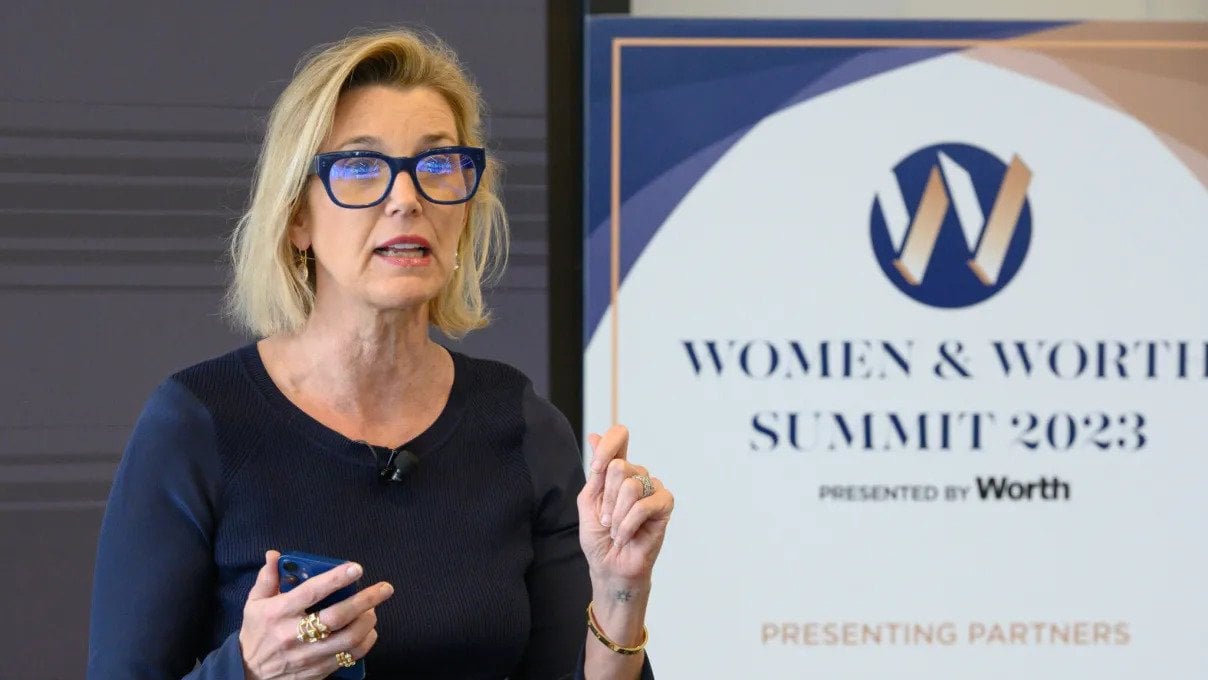Inequality in the workplace has long been a hot topic in the corporate world, but gender economist Katica Roy is actively turning that conversation into action. After fighting to be paid equitably twice—and winning—Roy was on a radio show when asked if she thought the pay gap would be closed in her lifetime.
“I said, ‘Well not until we make it an economic issue.’ And then I thought, oh, I think I can solve that.” Roy explained to Worth CEO Juliet Scott-Croxford, during the first day of the weeklong Techonomy Virtual: Reset + Restore conference. “So, that was my entry into entrepreneurship and really looking at gender equity as a massive economic opportunity rather than only a social issue.”

This realization led Roy to found Denver-based Pipeline Equity, an award-winning SaaS company that leverages artificial intelligence (AI) to identify and drive economic gains through gender equity.
“The idea behind [Pipeline and its application of AI] was: If we could change decisions that are made in organizations, the human capital decisions, we could actually make gender equity a reality in our time in our lifetime, rather than the hundred or so years that the World Economic Forum (WEF) talks about.” Roy said. “But also, we could essentially augment the decision making. We could also change the narrative from gender equity as this social issue to an economic opportunity. The thing that we also saw more broadly in the marketplace was that there was an increasing number of CEOs who were committed to gender equity and have made these public commitments. Yet, there was really a difference between making a commitment and living a commitment, really the difference between making that commitment and actually the employee experience of that commitment.”
“So, if we could change the way that the decisions are made,” she continued, “then we could actually catapult that opportunity forward.”
Of course, the WEF pay gap closure predictions were made before the COVID-19 pandemic hit, which Roy called a “she-session,” because women have lost the majority of jobs during this particular economic downturn.
“With remote work and with people being at home with children, most caregiving and unpaid work falls to women,” Roy explained. “We’ve seen that there’s about 40 percent of U.S. employees [who] don’t have sick leave. So, they have to choose between their health and going to work. And most of that actually falls on women…this particular economic downturn has really highlighted all the cracks that were already sitting underneath the system.”
But while this crisis has been a “giant step backward” for equality, “at the same time, what we are seeing is this opportunity to actually use artificial intelligence and use people analytics solutions to catapult us forward,” Roy said.
With the move to remote work, there has been a lot of talk about the flexibility of such situations being good for gender equity, but Roy warned that while working from home could help keep more women in the workforce, it could have a negative impact on female promotions.

“At this moment, there’s the opportunity to actually leverage artificial intelligence to ensure that we are not only continuing to make progress on gender equity, but actually catapulting us forward,” Roy explained. “And for companies, that is of particular importance because in the 2008 Great Recession, what we saw was companies that put equity at the core of their crisis management strategy actually increased the velocity of their recovery. So, for companies that are looking to recover, and recover more quickly, from this particular downturn, gender equity is important.”
But to close the gender pay gap, we can’t start by talking about pay. “Pay is the symptom, it’s not the disease,” Roy said. “In other words, pay is the quantitative value that you place on your talent. But the actual value happens before that in performance and potential.” And that’s where Pipeline’s platform steps in.
“We are augmented decision-making,” Roy, who also acts as Pipeline’s CEO, said. “So much like you would use Google Maps or ways to get from point A to point B, we do the very same thing for companies’ human capital management decisions. Essentially, it’s their data, our algorithms. We attach to their HR systems when they’re going to make a decision across these five pillars of talent, which essentially are kind of the five big buckets of talent decisions you make: hiring, pay, performance, potential and promotion. We actually intercept those decisions, essentially audit them. And then if there’s any inequity, make a recommendation.”
Using natural language processing, Pipeline’s platform reads through performance reviews and calls out any biased phrases. “We’ve found that on average, women are underrated 4 percent of the time, and that actually impacts their ability to be in the succession pipeline, as well as their pay. So that’s what we make possible. Just to give you one more quick stat: The average Fortune 500 company has 60,000 employees. And what we have discovered is that there’s really three key decisions that they make across those employees each year, which are performance, potential and pay. So, that’s 180,000 opportunities for the average Fortune 500 company to move toward equity each and every year. That’s what we make possible.”
According to Roy, in the next five years, we could reduce the time it will take to tackle gender equity, which is currently estimated at 257 years. “We could actually shorten that quite a bit,” Roy said. “At this moment, we have the opportunity to embrace AI as a tool to achieve gender equity.”
Emily Cegielski is an award-winning, New York City-based multimedia journalist and Senior Editor at Worth Media. This piece originally appeared on Worth.com.














